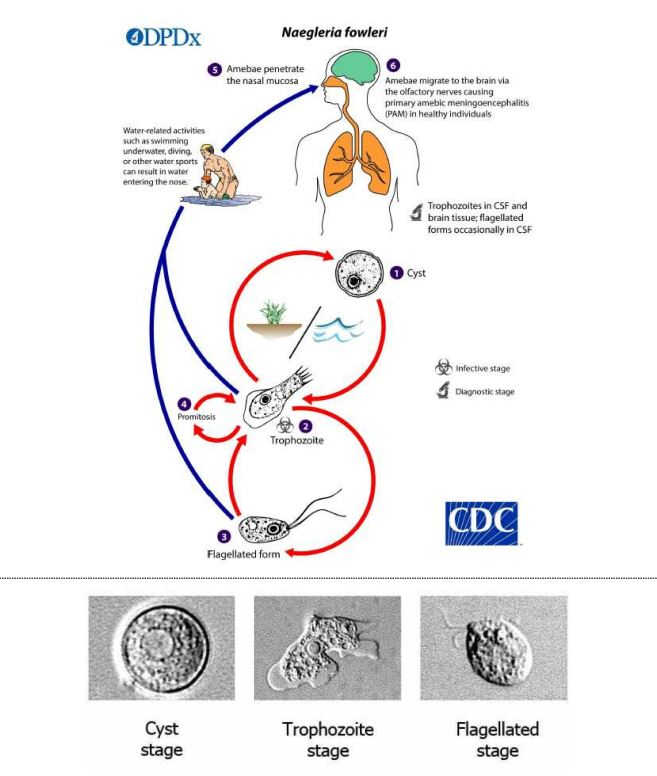S. Korea reports first death from 'brain-eating amoeba'
Man died last week after returning from Thailand says disease control agency
By Park Jun-heePublished : Dec. 26, 2022 - 14:08

South Korea reported its first case of infection from Naegleria fowleri, commonly referred to as “brain-eating amoeba,” health authorities said Monday.
The Korea Disease Control and Prevention Agency confirmed that a Korean national in his 50s had died after returning from Thailand. The man came back to Korea on Dec. 10 after a four-month stint there. He was admitted to a hospital the next day and died Wednesday last week.
The KDCA said it had conducted genetic tests on three types of pathogens causing Naegleria fowleri to confirm the cause of his death. The testing confirmed the gene in the man’s body was 99.6 percent similar to that found in a meningitis patient reported abroad.
This is the first known infection from the disease in South Korea. The first case was reported in Virginia in 1937.
Naegleria fowleri is an amoeba, or a single-celled living organism, that lives in soil and warm freshwater, such as hot springs, lakes and rivers, across the globe. The amoeba enters the body by inhalation through the nose and travels to the brain.
The initial symptoms might include headache, fever, nausea or vomiting, and later symptoms can lead to severe headaches, fever, vomiting and a stiff neck, according to the KDCA. The incubation period for Naegleria fowleri is usually from two to three days and up to 15 days at most.
Although human-to-human transmission of Naegleria fowleri is impossible, the KDCA asked residents to refrain from swimming in regions and neighborhoods where the disease broke out. It added that the risk of infection was not high, but most cases start through swimming.
“To prevent the infection of Naegleria fowleri, we recommend avoiding swimming and leisure-related activities and using clean water when traveling to areas where cases have been reported,” said Jee Young-mee, who heads the KDCA, via a press release.
The KDCA said clean water refers to any type of water that has not been contaminated, but people cannot be infected with Naegleria fowleri by drinking contaminated water. It added that the highest risk is when the water temperature rises during the summer.
A total of 381 cases of Naegleria fowleri have been reported around the globe as of 2018, including in India, Thailand, the United States, China and Japan.
The United States alone reported 154 infections from 1962 through 2021. According to the US Centers for Disease Control and Prevention, only four people survived, with a death rate over 97 percent.







![[Graphic News] More Koreans say they plan long-distance trips this year](http://res.heraldm.com/phpwas/restmb_idxmake.php?idx=644&simg=/content/image/2024/04/17/20240417050828_0.gif&u=)
![[KH Explains] Hyundai's full hybrid edge to pay off amid slow transition to pure EVs](http://res.heraldm.com/phpwas/restmb_idxmake.php?idx=644&simg=/content/image/2024/04/18/20240418050645_0.jpg&u=20240419100350)






![[From the Scene] Monks, Buddhists hail return of remains of Buddhas](http://res.heraldm.com/phpwas/restmb_idxmake.php?idx=652&simg=/content/image/2024/04/19/20240419050617_0.jpg&u=20240419175937)

![[KH Explains] Hyundai's full hybrid edge to pay off amid slow transition to pure EVs](http://res.heraldm.com/phpwas/restmb_idxmake.php?idx=652&simg=/content/image/2024/04/18/20240418050645_0.jpg&u=20240419100350)

![[Today’s K-pop] Illit drops debut single remix](http://res.heraldm.com/phpwas/restmb_idxmake.php?idx=642&simg=/content/image/2024/04/19/20240419050612_0.jpg&u=)